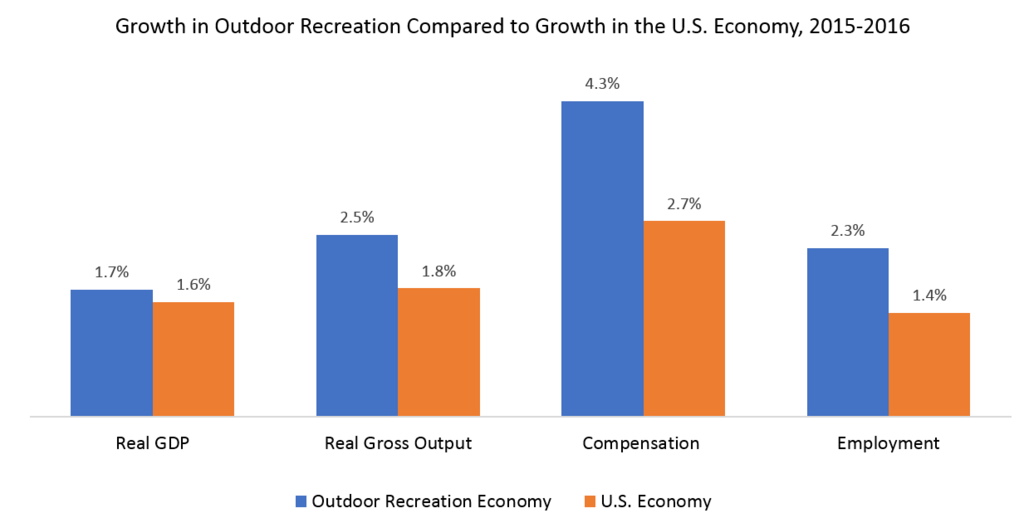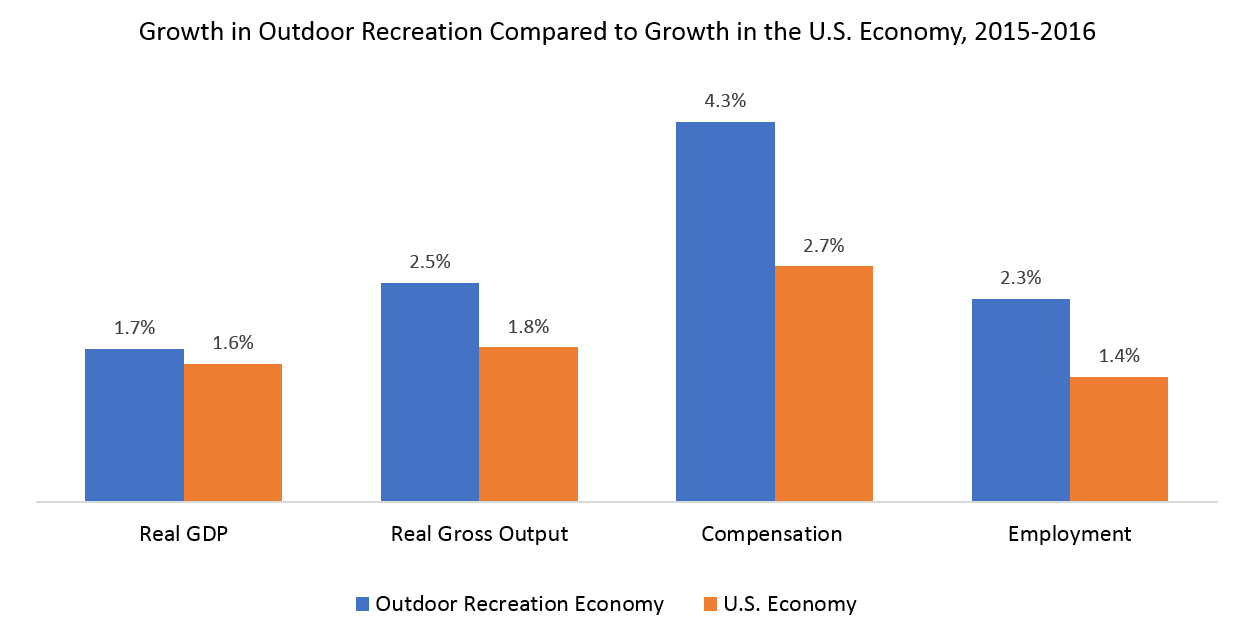The outdoor recreation economy accounted for 2.2 percent of current-dollar GDP in 2016, or $412 billion, updated statistics from the Outdoor Recreation Satellite Account show. In data produced for the first time, using inflation-adjusted GDP, the outdoor recreation economy grew 1.7 percent in 2016, faster than the 1.6 percent growth for the overall U.S. economy.
Real gross output, compensation, and employment all grew faster in outdoor recreation than in the overall economy, the U.S. Bureau of Economic Analysis found.
The statistics released today are updated to include refinements in methodology and presentation incorporated by BEA after receiving public feedback to its prototype statistics released Feb. 14. Outdoor recreation is the latest addition in a series of special accounts complementing BEA’s core statistics. These satellite accounts do not change BEA’s core statistics, including GDP, but give a closer look at specific areas of the economy.
In the Outdoor Recreation Satellite Account, gross output—principally a measure of sales or receipts—is presented both by industry and by activity. The activities include core activities, such as boating, bicycling, and hunting, and also supporting activities, such as construction, travel, and government spending related to outdoor recreation.
• Boating/fishing was the largest core outdoor recreation activity, accounting for $36.9 billion of real gross output.
• Motorcycling/ATVing activities accounted for $20.3 billion of real gross output, representing one of the fastest-growing activities, with 8.0 percent growth from 2015 to 2016.
• Multi-use apparel and accessories, such as backpacks and bug spray, that cannot be linked to a specific activity accounted for 12.2 percent, or $89.3 billion, of real gross output.
The report also shows how industries' participation in the outdoor recreation economy contributes to GDP. For example, the industry known as "arts, entertainment, recreation, accommodation, and food services" was the largest contributor to the outdoor recreation economy in 2016, accounting for 25 percent, or $94 billion, of all outdoor recreation activity.
For more information, read the full release.

